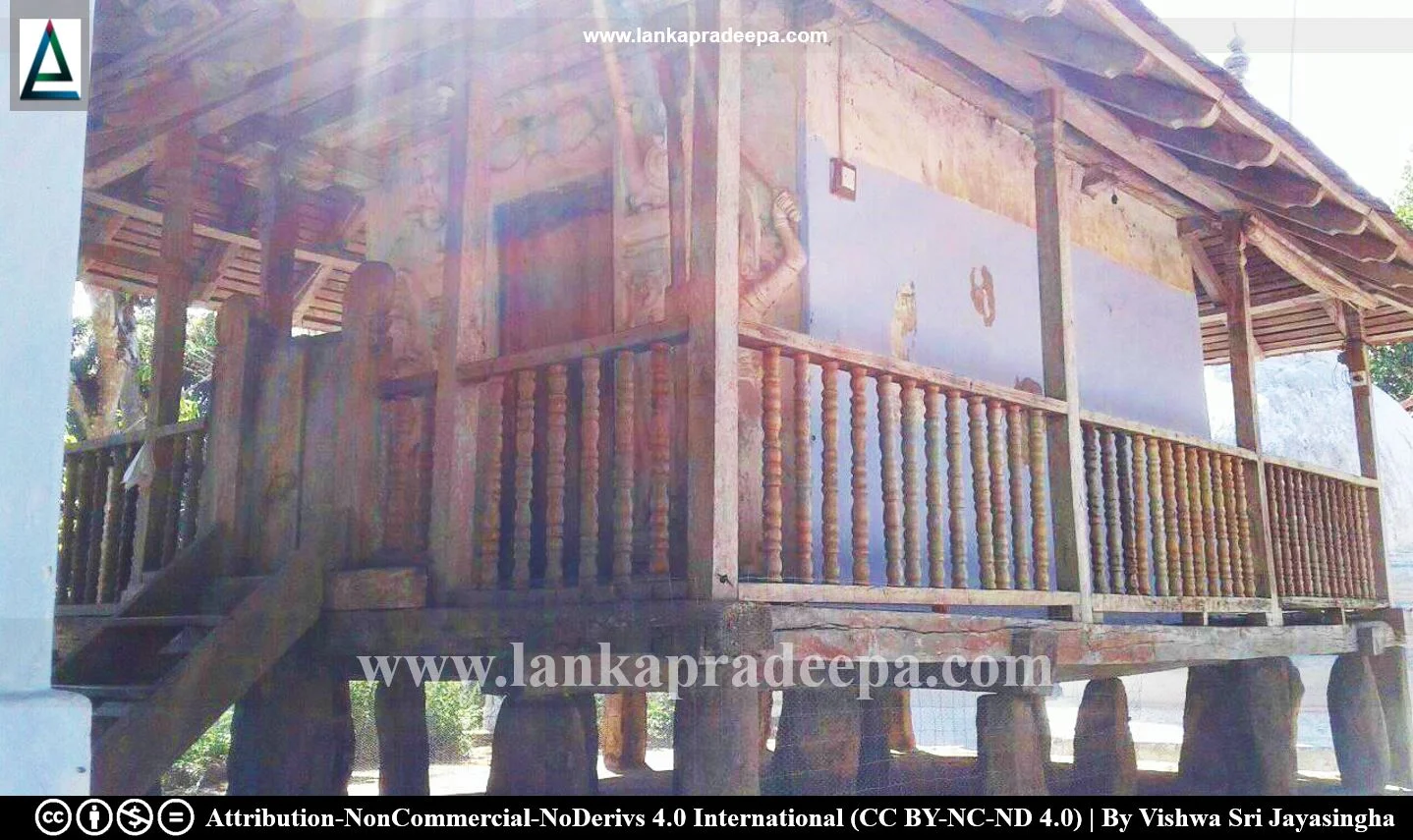
Dunkumbura Raja Maha Viharaya, also known as Dunkumbura Tempita Viharaya (Sinhala: දුංකුඹුර ටැම්පිට විහාරය), is a Buddhist temple situated in Hataraliyedda in Kandy District, Sri Lanka.
History
Initiated by a monk named Dunkumbure Ratanapala, the Tempita Viharaya of this temple was built in 1830 (Silva & Chandrasekara, 2021).
Tempita Viharaya
Tempita Viharas were a popular aspect of many Buddhist temples during the Kandyan Period. These structures were usually built on a wooden platform resting on bare stone pillars or stumps which are about 1-4 feet tall. The roof is generally made of timber and held by wooden stumps. The walls are usually made of wattle and daub and they form the main enclosed shrine room containing the Buddhist sculptures and murals belonging to the Kandyan style. Some Tempita Viharas have narrow verandas and ambulatories circulating the main enclosed space. The construction of these buildings started in the 17th century and lasted until the end of the 19th century (Wijayawardhana, 2010).
Dunkumbura Tempita Viharaya
The Tempita Viharaya of this temple can be identified as an ancient monument with archaeological value. It is a small rectangular building balanced on 24 stone stumps. A seated Buddha statue in Samadi mudra (gesture of meditation) and a few standing statues of Buddha are found inside the inner shrine room (Rajapakse, 2016). The inner walls of the shrine are filled with paintings depicting Buddhist themes and various decorative motifs.
There is a Mandapaya in front of the Tempita Viharaya and it is presently used as a drumming hall. It is said that there was an outer wall around the narrow ambulatory of the shrine but it had been removed in 1994 by the Department of Archaeology to reduce the excessive loading on the structure (Silva & Chandrasekara, 2021).
A protected site
The ancient dwelling house and Tempita image house at the Dunkumbura Purana Vihara premises situated in Dunkumbura Grama Niladhari Division in the Hatharaliyadda Divisional Secretary’s Division are archaeological protected monuments, declared by a government Gazette notification published on 21 October 2010.
References
1) Silva, K.D. and Chandrasekara, D.P., 2021. The Tämpiṭavihāras of Sri Lanka: Elevated Image-Houses in Buddhist Architecture. Anthem Press. pp.76-77.
2) Rajapakse, S., 2016. Pauranika Sthana Ha Smaraka: Mahanuwara Distrikkaya (In Sinhala). Archaeological Department of Sri Lanka. ISBN:955-9159-34-8. pp.132-133.
2) Rajapakse, S., 2016. Pauranika Sthana Ha Smaraka: Mahanuwara Distrikkaya (In Sinhala). Archaeological Department of Sri Lanka. ISBN:955-9159-34-8. pp.132-133.
3) The Gazette of the Democratic Socialist Republic of Sri Lanka. No: 1677. 21 October 2010. p.1750.
4) Wijayawardhana, K., 2010. Sri Lankawe Tampita Vihara (In Sinhala). Dayawansa Jayakody & Company. Colombo. ISBN: 978-955-551-752-2. p.12.
Location Map
This page was last updated on 12 April 2023

